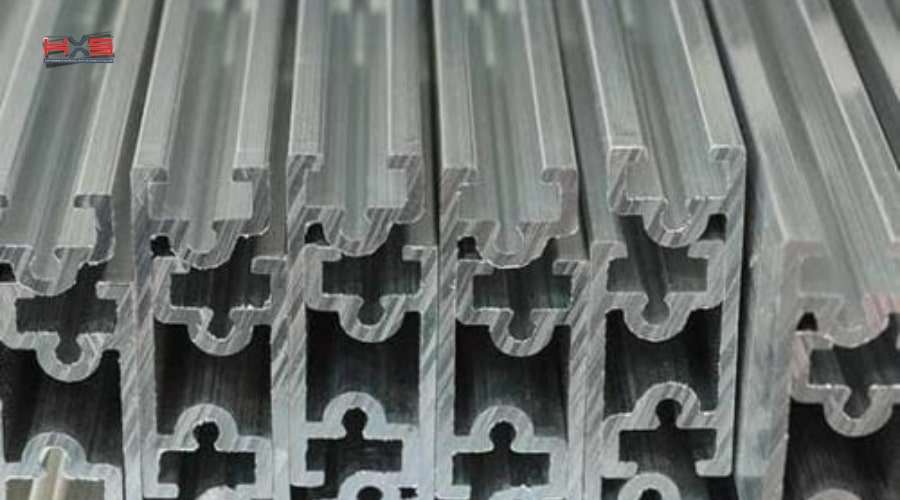
Aluminum channels are integral components in a multitude of industries, valued for their strength, durability, and versatility. Understanding the intricacies of aluminum channels and the aluminum extrusion process can provide valuable insights into their benefits and applications. This comprehensive guide will delve into the details of aluminum channels, the aluminum extrusion process, and their diverse uses.
An aluminum channel is a type of aluminum profile with a channel-shaped cross-section. These profiles are created through a process known as aluminum extrusion, which allows for the production of custom shapes and sizes tailored to specific needs. The channel shape, with its open, U-like or C-like form, makes it particularly useful for various structural and aesthetic applications.
• Shape Variations: Aluminum channels come in different cross-sectional shapes, including U-channel, C-channel, and T-channel. Each shape offers unique benefits depending on the application.
• Dimensions: Channels can be manufactured in a range of sizes, from small, precise profiles to large structural elements.
• Surface Finish: Aluminum channels can be finished with various treatments, such as anodizing or powder coating, to enhance their appearance and resistance to environmental factors.
Aluminum extrusion is a manufacturing process that involves pushing aluminum through a die to create specific shapes. This process is renowned for its efficiency and ability to produce complex profiles with tight tolerances.
1. Design and Engineering: The process begins with the design of the aluminum profile. Engineers and designers create detailed drawings and specifications based on the intended use of the channel.
2. Tooling and Die Preparation: A custom die is designed to shape the aluminum as it is extruded. This die is essential for achieving the precise dimensions and profile required for the channel.
3. Heating: Aluminum billets are heated to a specific temperature, making the metal soft and malleable for extrusion. The heating process ensures that the aluminum can be easily pushed through the die.
4. Extrusion: The heated aluminum is forced through the die using a hydraulic press or other extrusion equipment. The material takes on the shape of the die and emerges as a long, continuous profile.
5. Cooling and Cutting: After extrusion, the aluminum channel is cooled to solidify its shape. The extruded profile is then cut into specified lengths according to the requirements of the application.
Aluminum channels offer several advantages that make them a popular choice across various applications:
Aluminum is known for its impressive strength-to-weight ratio. Aluminum channels provide structural strength while remaining lightweight, making them ideal for applications where both strength and reduced weight are crucial.
One of the standout features of aluminum is its natural resistance to corrosion. The aluminum oxide layer that forms on the surface protects the metal from rust and degradation, ensuring that aluminum channels can withstand harsh environments and have a long service life.
The extrusion process allows for the creation of highly customized profiles to meet specific needs. This versatility makes aluminum channels suitable for a wide range of uses, from industrial applications to consumer products. Channels can be designed to accommodate various requirements, including load-bearing capabilities, aesthetic considerations, and specific functional needs.
Aluminum extrusion is a cost-effective manufacturing method, especially for high-volume production. The efficiency of the extrusion process, combined with the relatively low cost of aluminum compared to other metal panels & wall materials and makes it an economically viable option for many applications.
The versatility of aluminum u channel suppliers allows them to be used in numerous industries and applications. Here are some common uses:
Aluminum channels are widely used in construction for framing systems, structural supports, and trim. They are often found in window and door frames, curtain walls, and as structural reinforcements in various building components.
In the automotive sector, aluminum channels are employed for lightweight structural elements, such as chassis components, brackets, and supports. The use of aluminum helps improve fuel efficiency by reducing vehicle weight without compromising strength and safety.
The aerospace industry benefits from aluminum channels due to their lightweight and high-strength properties. They are used in aircraft frames, supports, and other structural components where weight reduction and durability are critical.
Aluminum channels are popular among DIY enthusiasts and in consumer products for their ease of use and adaptability. They are used in custom shelving, display stands, and various other home and workshop projects.
Aluminum extrusion provides several benefits that make it an ideal choice for producing aluminum channels.
The extrusion process allows for the production of profiles with high precision and consistency. This accuracy is crucial for applications that require exact measurements and uniformity.
Extrusion offers unparalleled design flexibility, enabling the creation of complex profiles with various cross-sections and surface finishes. This flexibility ensures that aluminum channels can be tailored to meet specific functional and aesthetic requirements.
Aluminum is a highly sustainable material. It is 100% recyclable without losing its quality, making aluminum extrusion an environmentally friendly manufacturing option. The recycling process requires significantly less energy compared to the production of new aluminum, contributing to reduced environmental impact.
Aluminum channels, produced through aluminum extrusion, combine strength, lightweight properties, and versatility, making them invaluable across various applications. Understanding aluminum extrusion's intricacies highlights the benefits of these channels, from their reliable performance and durability in construction, automotive, aerospace, and DIY projects to their adaptability and efficiency. By exploring these details, you gain a deeper appreciation for why aluminum channels are a preferred choice in modern engineering and design, underscoring their essential role in diverse industries.
The construction sector also needs support as the world advances in d...
READ FULLWhat is Polyurethane Foam? Polyurethane...
READ FULLAluminum channels are integral components in a multitude of industries, valued for thei...
READ FULL